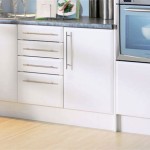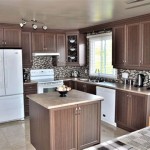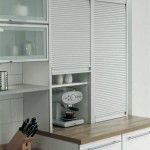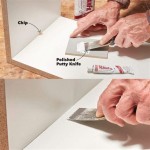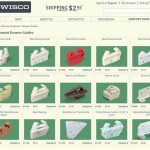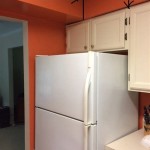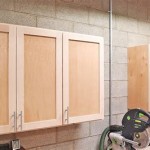How to Decorate Kitchen Cabinets: Enhancing Style and Functionality
Kitchen cabinets serve not only as storage solutions but also as significant aesthetic elements within the kitchen space. Decorating these cabinets presents an opportunity to personalize the kitchen, reflect individual style, and create a more inviting and functional environment. This article explores various techniques for enhancing the appearance of kitchen cabinets, covering painting, hardware upgrades, adding inserts, and utilizing decorative accents. A well-decorated kitchen cabinet not only enhances the kitchen's visual appeal but also contributes to overall home value and enjoyment.
Painting and Refinishing: A Transformative Approach
One of the most impactful ways to decorate kitchen cabinets is through painting or refinishing. This process allows for a complete transformation of the cabinets' appearance, enabling a change in color scheme and overall aesthetic. Prior to commencing any painting or refinishing project, careful preparation is critical. This preparation includes removing all hardware, thoroughly cleaning the cabinet surfaces, and sanding them to create a smooth and receptive base for the new finish.
The selection of paint type is an important consideration. Latex paints are water-based, easy to clean, and environmentally friendly, making them a popular choice for kitchen cabinets. Oil-based paints offer greater durability and a smoother finish but require more specialized cleaning and disposal procedures. Consider using specialized cabinet paints that are formulated for high-use areas and resist chipping and staining.
For those seeking a more natural look, refinishing can be a suitable alternative to painting. Refinishing involves stripping the existing finish, sanding the wood, and applying a new stain or clear coat. This process highlights the natural grain of the wood and can add warmth and character to the kitchen. A well-executed paint or refinishing project offers a durable and visually appealing transformation of kitchen cabinets.
Before committing to a full cabinet painting project, it is advisable to test the paint on a small, inconspicuous area. This allows for evaluating the color and finish in the kitchen's natural lighting. Pay attention to the undertones of the paint color, as they can shift depending on the ambient light. Testing ensures satisfaction with the final product and avoids potential rework. Additionally, consider using a primer before painting, especially if the cabinets are made of a glossy material or have been previously painted with a dark color. A primer helps the paint adhere better and prevents the old color from bleeding through.
Proper ventilation is crucial when painting or refinishing kitchen cabinets, as the fumes from paints and finishes can be harmful. Wear a respirator mask to protect against inhaling these fumes. Cover countertops, floors, and appliances with drop cloths to prevent paint splatters and spills. Use painter's tape to protect areas that should not be painted, such as walls and backsplashes. With careful preparation and attention to detail, painting or refinishing can be a successful method for updating kitchen cabinets.
Hardware Upgrades: Small Changes, Big Impact
Replacing cabinet hardware is a relatively simple and cost-effective way to update the look of kitchen cabinets. New knobs, pulls, and hinges can dramatically alter the cabinets' style and contribute to the overall aesthetic of the kitchen. When selecting new hardware, consider the existing design and color scheme of the kitchen. Chrome, brushed nickel, and oil-rubbed bronze are popular finishes that complement a variety of styles.
The style of the hardware should also align with the overall design of the kitchen. Sleek, modern cabinets may benefit from minimalist pulls, while more traditional cabinets may look better with ornate knobs. Before purchasing new hardware, measure the existing hole spacing on the cabinets to ensure a proper fit. If the new hardware does not match the existing hole spacing, it may be necessary to drill new holes, which can be more complex and may require professional assistance.
Beyond aesthetics, consider the functionality of the hardware. Ergonomic pulls and knobs can make it easier to open and close cabinets, especially for individuals with limited mobility. Heavy-duty hinges can improve the durability and lifespan of the cabinets. Choose hardware that is both visually appealing and practical for daily use. Furthermore, consider coordinating the cabinet hardware with other metal fixtures in the kitchen, such as the faucet, light fixtures, and appliance handles. This creates a cohesive and polished look throughout the space.
To install new hardware, a screwdriver is typically all that is needed. However, for more intricate hardware or if new holes need to be drilled, a drill and appropriate drill bits may be required. Take care not to overtighten screws, as this can damage the cabinet doors. If the cabinets are very old or made of a delicate material, consider using a pilot hole before inserting screws to prevent splitting or cracking. Replace all of the hardware at once to ensure a consistent and unified look. The transformation that new hardware can bring to kitchen cabinets is often surprising, given the relative ease and affordability of this upgrade.
Adding Inserts and Decorative Accents: Personalizing the Space
Once the cabinets are painted or refinished and the hardware is updated, adding inserts and decorative accents can further personalize the kitchen space. Inserts, such as glass panels, wire mesh, or fabric inserts, can add visual interest and break up the monotony of solid cabinet doors. Glass panels allow the contents of the cabinets to be visible, which can be particularly useful for displaying decorative items or frequently used cookware. Wire mesh offers a rustic or industrial look, while fabric inserts can add a touch of texture and color.
Decorative accents, such as crown molding, corbels, and appliques, can enhance the cabinets' architectural details and add a sense of sophistication. Crown molding adds a finished look to the top of the cabinets and can visually raise the ceiling height. Corbels can be used to support shelves or create a decorative detail under the cabinets. Appliques, which are small decorative carvings, can be attached to the cabinet doors to add a touch of elegance.
Consider using open shelving to display decorative items, such as cookbooks, plants, or pottery. Open shelving can create a more relaxed and inviting atmosphere in the kitchen. However, keep in mind that open shelves require regular dusting and organization to maintain a neat appearance. Another option is to add under-cabinet lighting to illuminate countertops and create a warm and inviting glow. This can be particularly useful in areas where task lighting is needed, such as near the sink or stove.
For a more personalized touch, consider adding decorative contact paper or wallpaper to the inside of the cabinets. This can add a pop of color or pattern and create a unique surprise when the cabinets are opened. Washi tape is another versatile option for adding decorative accents. It can be used to create borders, patterns, or even cover entire cabinet doors. Washi tape is easy to apply and remove, making it a great option for renters or those who like to change their decor frequently.
Ultimately, the choice of inserts and decorative accents should reflect personal style and preferences. Aim for a cohesive look that complements the overall design of the kitchen. Balancing functionality with aesthetics is important to create a kitchen space that is both beautiful and practical. Do not overcrowd the space with too many decorative items, as this can make the kitchen feel cluttered and overwhelming. Edit regularly and remove any items that are no longer needed or do not contribute to the overall aesthetic.
In conclusion, decorating kitchen cabinets involves a multi-faceted approach that includes careful planning and execution. By considering painting or refinishing, updating hardware, and adding inserts and decorative accents, homeowners can transform their kitchen cabinets into a visually appealing and functional feature of their home. A well-decorated kitchen cabinet not only enhances the kitchen's aesthetic but also contributes to the overall value and enjoyment of the living space.
:strip_icc()/101634871-9532042e1719420b859d6d4d4b732be3.jpg?strip=all)
16 Ideas For Decorating Above Kitchen Cabinets

19 Ideas For Decorating The Top Of Your Kitchen Cabinets Decor Above

How To Decorate Above Kitchen Cabinets Modern Farmhouse

Wow Me On The Weekend Decorating Above Cabinets County Road 407

How To Style Glass Kitchen Cabinets Sanctuary Home Decor
:strip_icc()/101705919-46c69aadc4b1401fbb8383b607c37b36.jpg?strip=all)
16 Ideas For Decorating Above Kitchen Cabinets

How To Decorate Above Kitchen Cabinets Modern Farmhouse

How To Style Glass Kitchen Cabinets Sanctuary Home Decor

18 Ideas For Decorating Above Kitchen Cabinets Design Top Of

How To Decorate Above Your Kitchen Cabinets
Related Posts

